
























































We’ve brought you features on World Cups, football tournaments and the Olympics. This time, we have something different: a mixed bag of lesser-known sports fondly embraced by South Africans. Yes, that includes one of our favourites: the braai. Of cially, it’s not a sport, but unof cially, a re burning in the yard with wild conversations featuring a big match underway on a Saturday is a regular occurrence in many homes. Anthony Sharpe delves deeper into this favourite pastime. He tells us about the centuries-old sports of jukskei, croquet and bowls – the latter will see us represented at the indoor champs in Hong Kong in December.
1 BOWLS, CROQUET AND JUKSKEI
Bowls, croquet and jukskei differ in their mechanics, but all involve scoring points by rolling, hitting or inging a ball or stick at a ball, hoop or pin.
2 TOUCH, BIND, SIZZLE!

On page 10 we look at the origins of polo and how the sport has developed over the years. We also look forward to the World Sports Betting Cape Town Met in January, while Herman Gibbs lets us in on the bene ts of paddlesport.


This edition of Inside Sport is a unique read, so I also picked the football stars of the future from the PSL and English Premier League. It should be an eye-opener. Enjoy.
Nkareng Matshe Sports editor, Sowetan


PUBLISHED BY
Picasso
Headline,
A proud division of Arena Holdings (Pty) Ltd, Hill on Empire, 16 Empire Road (cnr Hillside Road), Parktown, Johannesburg, 2193 PO Box 12500, Mill Street, Cape Town, 8010 www.businessmediamags.co.za
EDITORIAL
Content Manager: Raina Julies rainaj@picasso.co.za
Contributors: Keith Bain, Herman Gibbs, Nkareng Matshe, Anthony Sharpe
Copy Editor: Brenda Bryden


There’s nothing quite as South African as braaing and watching a game on telly.
4 SOUTH AFRICA, THE QUINTESSENTIAL PADDLER’S PARADISE
We deep dive into the ins and outs of kayaking and canoeing.
6 HORSING AROUND
On 25 January 2025, Hollywoodbets Kenilworth will transform into one of Cape Town’s biggest soirées – a tting celebration to accompany one of South Africa’s richest horseracing events, the Cape Met.
8 A LEGACY OF EXCELLENCE
When Ernie Els surprised the gol ng world by winning the 2012 Open Championship at Royal Lytham & St Annes Golf Club in England, it raised the perennial debate about why South Africa has so many Major winners.

Think polo’s only for an elite few? The gentleman’s game played on horseback has a curious history, is thrilling to watch and gaining in popularity.
With the PSL season now in full swing, we look at ve youngsters who are shining brightly.
The verbal blows recently traded by Mamelodi Sundowns coach Manqoba Mngqithi and Bafana Bafana’s Hugo Broos highlight the need for South African football to pull in one direction.


Content Co-ordinator: Natasha Maneveldt
Online Editor: Stacey Visser vissers@businessmediamags.co.za
DESIGN
Head of Design: Jayne Macé-Ferguson
Project Designer: Anja Hagenbuch
Cover Images: Scott Jenkin/Istockphoto.com, PeopleImages/Istockphoto.com, Supplied
SALES
Project Manager: Merryl Klein merrylk@picasso.co.za |
Production Editor: Shamiela Brenner
Advertising Co-ordinator: Johan Labuschagne
Subscriptions and Distribution: Fatima Dramat fatimad@picasso.co.za
Printer: CTP Printers, Cape Town



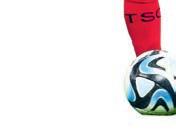
MANAGEMENT
Management Accountant: Deidre Musha
Business Manager: Lodewyk van der Walt General Manager, Magazines: Jocelyne Bayer



COPYRIGHT: No portion of this magazine may be reproduced in any form without written consent of the publisher. The publisher is not responsible for unsolicited material. Inside Sport is published by Picasso Headline. The opinions expressed are not necessarily those of Picasso Headline. All advertisements/advertorials have been paid for and therefore do not carry any endorsement by the publisher.


Bowls, jukskei and croquet aren’t just for retirees as ANTHONY SHARPE discovers
The sun shining down from its perch in a bright blue sky. A gentle summer breeze rustling the leaves on the trees and the collars of crisp white shirts. The gentle thwack of wood against ball. Sure, you could be playing cricket – or you could be playing something altogether more chilled.
Bowls, croquet and the distinctly South African sport of jukskei differ in their mechanics, but all involve scoring points by rolling, hitting or inging a ball or stick at a ball, hoop or pin. They’re also all perhaps associated with a slightly older demographic … although dedicated people are working to change that.
BOWLS
Adapted from the ancient games of boules, bowls in its present form has been played since the 13th century. On local shores, you’ve probably mostly seen it being played by groups of pensioners at retirement homes and sports clubs. However, a look at the South African team that recently participated in the 2024 African States Tournament might surprise you. Featuring athletes of all colours, ages and shapes, it’s emblematic of how the game is changing.
An even more encouraging sign is that locals Lezandri Hildebrand and Alwyn Martignone will represent Bowls South Africa at the World Bowls Indoor Championship from 2–8 December in Hong Kong.
With its roots in mid-18th-century Cape of Good Hope ox wagon drivers, jukskei is as South African as rooibos tea. Sylvia Nortje, director of umpires and communication at the International Jukskei Federation, says the sport is a great opportunity for young people to develop skills not just related to sport, but also to teamwork, team building, communication and making friends. “We run various projects in underprivileged
Bowls, croquet and the distinctly South African sport of jukskei differ in their mechanics, but all involve scoring points by rolling, hitting or flinging a ball or stick at a ball, hoop or pin.

communities to teach the skills of the game so they can represent themselves and their areas. We have some youngsters in Gauteng and the Eastern Cape who have received their national colours.”
Nortje says South Africa recently sent a team to Uganda to help Ugandans develop their skills. “They’re coming to South Africa next year to compete. This is transforming the sport locally and internationally. It’s part of our vision to broaden the sport to have more international participation so there are ultimately more opportunities for learners to play.”
The youngest sport on this list, croquet’s rules were rst recorded in 1856. It’s enjoyed something of a revival in recent years at weddings. But, with at least 20 clubs (registered and independent) across the Eastern Cape, Western Cape, Gauteng and KwaZulu-Natal, there’s more to the genteel sport of thwacking a ball between hoops than just waiting for the reception to begin.
Unfortunately, Judith Hanekom, president of the South African Croquet Association, says they are struggling to recruit younger members. “They have a multitude of sporting choices and will generally gravitate towards the sports offered in schools. Ideally, schools need to be tapped into and the sport encouraged from there, but until we are allowed a foot in the door it is very dif cult. A few years ago, the University of Cape Town introduced croquet at one of their open days and a student club was started. They showed immense promise, but life and studies sadly got in the way. We hope that later in life they will come back to the game.”
There’s nothing quite as South African as braaing and watching a game, writes ANTHONY SHARPE

Summer is nally here bringing with it long days, gatherings with friends and the smell of braaivleis drifting through the neighbourhood … followed by a blood-curdling chorus of voices screaming in joy or horror. Sure, rugby season is coming to a close, so we’ll have to be content with the mercurial performances of our cricketing side and our slightly-better-than-before soccer squad, but that won’t stop South Africans from ambéing meat or screaming at TVs.
In a country of such mixed heritage and cultures, braaing is our unof cial national sport, pastime, uni er and an excuse to get together and just hang out.
Jan Braai, who knows more than most about the unifying power of braaing, believes that it cuts across identity barriers. “In South
Africa, we don’t have a national dress, for example, so there needs to be something we can all identify with positively. Sport is one –especially rugby because that’s the one we win at – and braaing, too.
“While many South Africans don’t have the resources to watch sports game live, we are big at watching on TV with our mates, and braaing is part of that entertainment,” Jan comments.
Depending on the host’s disposition, braaing can be a team sport or an individual enterprise. But is there any correct way to braai? “Of course not!” says Jan. “You don’t have to eat meat – you can do roesterkoek, mielies and other veggies. It doesn’t need to be on the grid; it can be straight on the coals or in a potjie. Cooking on a re is something South Africans do regularly. As a symbol, it’s just about realising how special that is.”
South African sports stadiums offer an array of food options reflecting the country’s diverse culinary landscape. Fans can indulge in a variety of delicious fare. Traditional favourites often include bunny chow, a hollowed-out loaf filled with spiced curry, and boerewors rolls with tangy sauces.
Stadiums also cater to international tastes with options such as pizza, burgers and fried chicken. For a quick snack, chips and dip or kebabs provide a convenient way to enjoy the game.
Health-conscious fans can find salads and grilled options, while various stands often feature sweet treats such as koeksisters, a local syrup-soaked pastry. Whether at a rugby match or a cricket game, the food at South African sports stadiums enhances the electrifying atmosphere, making for a memorable experience.
South Africa’s best-known braaier likes to put on a winning spread.
•Braaibroodjies for an arrival snack with cheese, onion and tomato or something more adventurous such as feta and green fig preserve – anything as long as it’s buttered on the outside.
•Before the game starts, it’s chicken wings or baby back ribs, then lamb chops.
•During the game, it’s steak or chicken prego rolls. After that, it’s time for steak, braaied thinly sliced and served with a tangy sauce.
•For dessert, if you didn’t start with braaibroodjies you can do them with Nutella and chopped marshmallows or chocolate inside. Alternatively, braai a banana-filled wrap smeared with Nutella, wrapped and served with whipped cream.
Outback Braais captures the essence of South African living where gathering around the fire is more than just cooking – it’s about connection. This brand blends tradition with modern convenience, offering hybrid braais that seamlessly switch between gas and charcoal, meeting the needs of a nation that values quality and versatility. With a focus on sustainability and craftsmanship, Outback Braais ensures its products are built to last. Its vision extends to fostering a community where shared moments become lasting memories.
More than a brand, Outback Braais represents a lifestyle, celebrating the stories, laughter and togetherness that define South African braai culture. It’s about creating unforgettable experiences around the fire.


Robbie Herreveld, six-time winner of the Berg River Canoe Marathon, one of South Africa’s iconic sporting events, knows the Southern African kayaking and canoeing landscape like the back of his hand.
The 52-year-old UK-born Herreveld, popularly known as “King of the Berg”, gained this knowledge after about 40 years of experience in competitive and recreational paddling, locally and internationally.
For the past 30 years, Herreveld has run a kayaking and canoeing business that attracts clients from around Southern Africa. Apart from supplying equipment, Herreveld offers clients rst-hand advice.
COVID-19, the wildly disruptive pandemic, was a blessing in disguise because many turned to the outdoors to enjoy nature and stay healthy during lockdown. Paddlesport, which includes kayaking and canoeing, was an attractive option and has grown in popularity.
South Africa’s diverse landscape offers ideal settings for paddling. Here are some of the premier destinations for recreation and racing.
Canoe enthusiasts target rivers with a long-standing connection with river races. The earliest events were on the Orange and Vaal Rivers (Northern Cape). Later, the Dusi Canoe Marathon (Pietermaritzburg and Durban) made the Msunduzi and Mgeni Rivers popular.
Kayaking is more than a sport; it’s a gateway to nature’s beauty. Whether gliding on serene waters, exploring hidden waterways or tackling rushing rapids, it offers a unique way to experience South Africa’s diverse landscapes.
From tranquil rivers to dramatic coastlines, kayaking is suitable for everyone. Families can bond on calm waters, thrill-seekers can brave whitewater rapids and anglers are using kayaks to access secluded fishing spots. Even children can join, thanks to kid-friendly designs.
Kayaking fosters mindfulness, a connection to nature and community interaction through group outings and events. Local manufacturers, such as Fluid Kayaks (www.fluidkayaks.com), make the sport more accessible.
For many South Africans, kayaking is becoming a lifestyle of adventure, fitness and tranquillity.
In the Eastern Cape, the Fish River is the big attraction and the venue for the popular Fish River Canoe Marathon.
In the Western Cape, the Berg River, the venue for the annual Berg River Canoe Marathon, is the favourite.
• Even at a moderate pace, paddlesport is an excellent form of exercise. It can improve cardiovascular health, increase muscle strength and reduce stress.
• It is ideal for people of all ages and fitness levels. It offers low-impact activity and is easy on joints. It helps stave off arthritis or other mobility issues.
• Paddlesport provides an excellent workout and offers effective balance
work. It strengthens the muscles that stabilise your body.
• It is an effective activity to aid weight loss. It feels less like a workout and more like an adventure.
• It improves mental wellbeing. Being out on the water can be soothing and offer stress relief. It helps clear the mind, reduce anxiety and boost your mood.

Kayaking, be it rivers, dams or ocean, is offered at many of these venues and enjoys media coverage during events such as the Freedom Paddle Surfski Race, the Cape Point Challenge Open Ocean Race and SA S1 Surfski. Numerous companies around the country offer paddlers kayaking opportunities.
Herreveld’s parting shot: “Anybody with a competitive bone in their body will automatically go on to racing. Paddling governing bodies must focus on bringing people into the sport to enjoy it. If they don’t, paddling will lose numbers.”
1.
Many clubs have sprung up around the country. These clubs focus on racing rather than leisure but paddlers are happy to have a base to pursue their chosen sport. Fun paddlers are there for the weekends looking at the birds, getting on the water and enjoying nature.
2. Paddlesport has a strong following in schools, especially in Gauteng. More and more schools enter teams for kayaking and canoeing events. It is a good feeder into the sport. The only concern is that not all continue after leaving school.
3.
Many competitions around the country are available to paddlers. However, the number of competitors has not necessarily increased because the growing leisure segment outstrips the competitive group.
4. Leading paddlers attract sponsors as do development programmes. All my life, I have been involved with development paddlers.








Imagine the sun glinting off the water as you paddle through a tranquil lake or the thrill of catching your first fish from a kayak perfectly equipped for your needs. At Fluid Kayaks, we design kayaks that inspire adventure, bring families together and connect people with nature.
South Africa’s landscape is unmatched for paddling – whether calm estuaries, breathtaking coastlines or roaring rapids.
To help you enjoy these waters, Fluid Kayaks offers an extensive range of high-quality, locally designed kayaks.
• Recreational kayaks: perfect for beginners, families and those seeking a relaxing day on the water. Durable, stable and easy to
use, these kayaks are built to make your experience worry-free.
• Fishing kayaks: tailored for anglers, our fishing kayaks are equipped with rod holders, ample storage and ergonomic designs to make your fishing trips comfortable and productive.
• Kids’ kayaks: designed with safety and fun in mind, our kids’ range helps young paddlers start their water adventures confidently.
Fluid Kayaks — get on the water and get living. Visit our website at www.fluidkayaks.com to explore our full range.
With Fluid Kayaks, you’re not just buying a kayak; you’re investing in making memories, getting fit and experiencing the thrill of exploration. Our products are crafted using years of technical insight and real-world paddling experience ensuring unmatched performance and reliability. Whether you’re new to paddling or a seasoned enthusiast, Fluid Kayaks has something for you.

On 25 January 2025, Hollywoodbets Kenilworth will transform into one of Cape Town’s biggest soirées – a fitting celebration to accompany one of South Africa’s richest horseracing events. By
KEITH BAIN
Since 1883, the World Sports Betting Cape Town Met – originally known as the Metropolitan Mile – has been an unrivalled source of awe for horseracing enthusiasts and socialites. Being there – at Hollywoodbets Kenilworth, the country’s oldest racecourse – is not only a highlight on the sporting calendar, but also a party packed with pomp, ceremony and amboyant out ts.
In 2025, the event’s sponsor, World Sports Betting, has teamed up with Cape Racing to offer a supercharged purse of R5-million, making it one of Africa’s richest equine events.
No matter the prize, the Cape Met has always been considered Cape Town’s premier race. Initially run over a mile, it has, since 1948, been a 2 000-metre race. Between 1895 and 1909, it was held several times a year – ve times in 1901. It has only been suspended once – for the duration of the First World War – and in 1943 and 1944, the race transferred to Milnerton while Hollywoodbets Kenilworth was used as a military base.
Three racing families – the Lairds, Millards and Kannemeyers – have dominated the race. Each has had 10 horses win the Met. But it was Oppenheimer-owned Horse Chestnut, considered one of South Africa’s greatest racing horses ever, that became the rst three year old to win The Met in over half a century in 1999. Pocket Power, another equine superstar, won it three times from 2007.
In 2024, the 162nd Met was won by Double Superlative, ridden by visiting British jockey Daniel Muscutt – a nail-biting 33/1 upset and proof that, in horseracing, anything can happen.

While the race is historically signi cant and socially exuberant, few who attend know that Hollywoodbets Kenilworth encircles a 52-hectare nature reserve, a vital conservation area kept undisturbed since the track was rst cut in 1881. It’s home to a rare microfrog that lives nowhere else, and among the 300 native plant types it protects are at least two dozen endangered species endemic to Kenilworth.
THE 2025 CAPE MET PROMISES TO BE AN EXCEPTIONAL CELEBRATION, ON THE TRACK AND OFF.
Proximity to such a fragile environment to some extent complicates racetrack maintenance. Hollywoodbets Kenilworth’s crew studiously maintains records of all fertilisers, herbicides and fungicides used and, according to the team’s supervisor, contend with moles, insects and parasites, guinea fowl and francolin that dig up divots and Egyptian geese that eat the track. He says, though, that it’s worth putting up with to help maintain the biodiversity of such a special place.
Aside from its “Cape Summer Festival of Racing” that includes the L’Ormarins King’s Plate and the prestigious Met, year-round racing is possible thanks to a full-time crew who ensure that the surface is safe, consistent and fair. With around 50 race days per year, they’re kept very busy.


Since The King’s Plate and the Cape Met are Hollywoodbets Kenilworth’s agship events, maintenance ahead of these race days is optimal. Fertiliser is applied two weeks before the events and the track supervisor pays close attention to weather forecasts to determine how much to water the track – and when.
Hollywoodbets Kenilworth has invested heavily in an automatic, computerised, state-of-the-art irrigation system, operated by radio frequency. In summer, when it’s dry, the sprinklers are usually switched on immediately after the nal race on event days.
The maintenance crew takes feedback from jockeys and trainers about the condition of the racing surfaces and assesses race-day turf conditions using a penetrometer (or GoingStick) to determine the track’s water content. If heavy rainfall causes the ground to become too wet and soft, races are taken off the turf to avoid endangering horses and riders. The crew also walks the course daily to check for disease, weeds and other hazards.
In 2024, Hollywoodbets Kenilworth emerged from an extensive make-over with improved facilities to enhance the race-day experience for everyone. The 2025 Cape Met promises to be an exceptional celebration, on the track and off. The theme is “Couture Unleashed”, the spirit of which, says Cape Racing COO Donovan Everitt, encourages attendees to “break free from tradition”. There’s sure to be some daring fashion, with incredible entertainment and heart-pounding horseracing, too.



Plus, he says the party will last deep into the night, no matter who is rst over the nish line.

HERMAN GIBBS writes that when Ernie Els surprised the golfing world by winning the 2012 Open Championship at Royal Lytham & St Annes Golf Club in England, it raised the perennial debate about why South Africa has so many Major winners
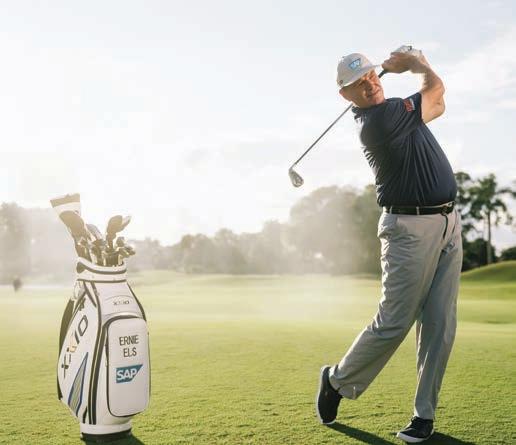
Ernie Els’ dramatic feat in 2012 followed the exploits of fellow South Africans Louis Oosthuizen and Charl Schwartzel two years prior when the world was again alerted to Mzansi’s standing in world golf.
At the 2011 Masters, Schwartzel birdied the nal four holes to win his rst (and only) major championship.
At the 2010 British Open, Oosthuizen shot a nal round 71 to win his rst (and only) major championship by seven shots. He became the fourth South African to win the Claret Jug, following the triumphs of Bobby Locke (1949, 1950, 1952, 1957), Gary Player (1959, 1968, 1974) and Ernie Els (2002).
There’s a common thread running through the Major conquests of Oosthuizen and Schwartzel. Both were at the Ernie Els Foundation, which identi ed and assisted young talents to reach their full potential. This connection points to one of the primary reasons for South Africa’s gol ng excellence.
1. Organisations such as the Ernie Els Fancourt Foundation and Johann Rupert’s SA Golf Development Board have
The Alfred Dunhill Championship is staged mid-December at the magnificent Leopard Creek Country Club overlooking the Kruger National Park. It will be the Sunshine Tour’s 2024 finale in South Africa. As a co-sanctioned event, this tournament on the shores of the picturesque Crocodile River is part of the DP World Tour’s Opening Swing for the new season. Last year, Louis Oosthuizen claimed a dramatic two-stroke victory over Charl Schwartzel.
The Sunshine Tour will have a 2024 finale in Southern Africa a few days later with the AfrAsia Bank Mauritius Open. It is part of the DP World Tour and is played in the breathtaking region around the Mont Choisy Le Golf in Grand Baie. Oosthuizen carded a final-round 69 to close out a two-shot victory last year.
done much for the growth of golf. Els added a personal touch when his special talents had blossomed enough to join the world tour. “I had them (Oosthuizen and Schwartzel) in my foundation and looked after them as youngsters. They ew with me, they stayed at my house. I kind of nurtured them to get onto the PGA Tour,” Els told the media when his two former proteges joined the rival LIV Golf Tour last year.
2. South Africa’s weather allows golfers to play and practise all year round. Importantly, the weather is predictable and enables planning activities.
3. The quality of South African golf courses is high and well-maintained. Many have wonderful locations adjacent to iconic tourist attractions such as the Kruger National Park, Leopards Creek and Pilanesberg National Park.
The 114th Investec South African Open Championship returns in 2025, bringing world-class golf back to the iconic Durban Country Club. With its breathtaking views of the Blue Lagoon estuary and Indian Ocean, this historic venue has hosted the SA Open 17 times, including its centenary event in 2010.

From 27 February to 2 March, fans can witness top-tier action as the DP World Tour co-sanctioned event attracts some of golf’s biggest stars. Players will compete to join legends, such as Gary Player, Bobby Locke, Ernie Els, Vijay Singh and Louis Oosthuizen, in the tournament’s storied history. Dean Burmester, who triumphed in 2023, will look to continue his remarkable form. Will he conquer this historic course once again?
Secure your tickets at www.sunshinetour.com/tickets
4. The hospitality packages offered by South African promoters have been a big attraction for overseas golfers to play in South Africa. The visiting golfers provide a great lift for local tournaments because rising South African talents pit their skills against some of the nest up-and-coming stars. Many of them are about to join golf’s world tours, and a few months later, they feature in the Majors.
12–15 December 2024: Alfred Dunhill Championship, Leopard Creek Country Club.
19–22 December 2024: AfrAsia Bank Mauritius Open, Mont Choisy Le Golf Mauritius.
27 February–2 March 2025: Investec SA Open, Durban Country Club.

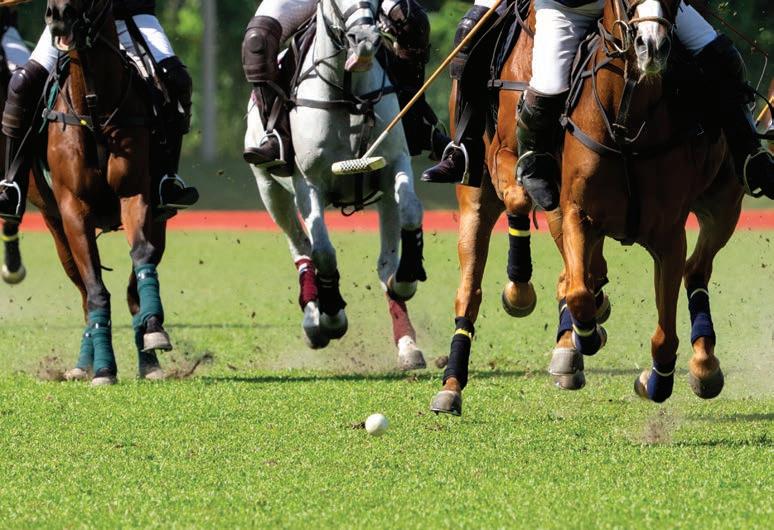
Think polo’s only for an elite few? The gentleman’s game that’s played on horseback has a curious history, is thrilling to watch, and gaining in popularity.
By Keith Bain
Known as the “sport of kings”, polo is often associated with social privilege and swanky elite gatherings. It’s an expensive sport, given the need for impeccably groomed, well-trained horses that require stabling and constant attention. But riders must be highly skilled in the saddle and manoeuvre around the pitch at bracing speeds, all the while wielding a wooden mallet in one hand while on the trot. Those are skills money cannot buy.
The drama of it is similarly priceless. With four players per team, plus two horse-mounted referees, the exertions are breathtaking to behold. This is, after all, a sport that originated as a kind of war game among nomadic Persians and Turks as far back as the 6 th century BC –the games were a form of cavalry training for troops. In today’s more civilised context the action frequently escalates to full-scale galloping as riders dextrously race up and down the eld in pursuit of a tiny ball that is whacked with alarming precision and great force.
The action, which consists of a series of seven-minute chukkas, can be intense. Players aren’t simply skilled in the saddle, but must pretty much communicate subconsciously with their mounts to keep them moving.
Initially the domain of the British cavalry, South Africa’s rst recorded polo match was held in 1874 in King William’s Town, between the Gordon Highlanders and the Cape Mounted Ri es. British mounted troops were pro cient in the game – and they had horses.
Although initially dominated by the military, civilian clubs also began popping up, the rst being the Dargle Polo Club in the KwaZulu-Natal Midlands. The sport took hold in Johannesburg in 1894, its rst club founded by the proprietor of the Gold elds Hotel. The South African Polo
While the horses are referred to as polo ponies, they are actually full-size horses. And since the riders change horses regularly between chukkas, you might want to check out how they sometimes jump directly from one horse to the next without dismounting onto the ground. Talk about saddle skills!

Among the most important competitions on the local calendar, the Nedbank International Polo is a prestigious event held at Johannesburg’s Inanda Club where competing teams from the UK, Australia, Argentina and elsewhere battle it out in front of a fashion-savvy crowd. Inanda also hosts the Inanda Africa Cup, which brings teams from Kenya, Nigeria, Zambia and Zimbabwe to compete with South Africa in the heart of Sandton.
Some of the best-loved clubs are in rural locations. Kurland, a fabulous polo estate in a salubrious countryside setting near Plettenberg Bay, is regarded by many to be Africa’s answer to Pilar, a veritable polo mecca in Argentina. Tournaments at Kurland usually happen from December to April, when the local polo pony population swells to 700.
Association was formed in 1906 in a room of Durban’s Royal Hotel, and today there are about 38 clubs in South Africa and about 450 registered players.
While it’s called the “sport of kings”, women also play but it was not until the late-1940s that women’s polo seriously took off in South Africa largely thanks to Cicely FitzPatrick, who founded the Addo Polo Club in Uitenhage in 1923. Many British settlers’ wives were keen horsewomen and the rst recorded match between ladies’ teams was held in 1932 – it ended in a two-all draw.
Polo’s racial diversi cation has taken much longer, however. Since 1994, there’ve been strides to overcome the sport’s elitist streak and make polo more accessible and open to a broader range of participants.
As much as it’s open to all, it retains an air of dignity. Certainly, polo matches are often spiffy social events, usually with prestigious sponsors.
TOP TIP: If you have a serious interest in following the game, it’s always a good idea to take binoculars to more closely follow the action – the ball is small and the field is vast and with 10 horses charging about, there are plenty of distractions.
Mfundo Vilakazi (Kaizer Chiefs).
The teenager made his Chiefs senior debut last season but was limited to just six matches. Under new coach Nasreddine Nabi, Vilakazi, who turns 19 on 19 November, has shown signs of living up to his promise by scoring the winning goal in Chiefs’ opening league match away to Marumo Gallants.
Mohau Nkota (Orlando Pirates).
Kimberley-born Nkota was a surprise inclusion in Pirates’ pre-season squad that toured Spain, but it was not before Bucs’ Carling Knockout match against Magesi that his real potential was seen. With the team 0–3 down, Nkota was introduced at half-time and made a real impact but Pirates fell just short to lose 2–3. Nkota, 20, has been an unmissable name in the match-day squad since.
Kutlwano Letlhaku (Mamelodi Sundowns). Left-footed attacker Letlhaku, 17, was recruited from the School of Excellence for Sundowns’ reserve team last year but has been so impressive that he was promoted to the rst team this season. He scored in the 5–0 win over Golden Arrows in the Carling Knockout, minutes after coming on.
Jaedin Rhodes (Cape Town City). Mid elder Rhodes, 21, is probably unfortunate not to have made his Bafana debut yet. He played 29 of City’s 30 league games last season, proving to be one of coach Eric Tinkler’s most dependable players. A con dent attacker, perhaps this is the season


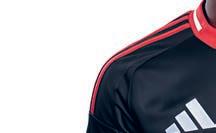

The PSL season is in full swing and a few players are emerging as potential challengers for the Young Player of the Year gong.
NKARENG MATSHE picks five youngsters who’ve shone the brightest thus far
when national coach Hugo Broos will nally notice Rhodes’s immense talent.
Puso Dithejane (TS Galaxy). Winger Dithejane is one of the most creative players in the PSL, able to take on players and fashion chances from tight situations. He made his Galaxy debut last season, playing nearly half of their league games but the 20 year old has had to step up as a senior as his club continues to lose key personnel to clubs with bigger budgets.
The English Premiership League (EPL) has also seen rising talent. We look at ve players who could be big stars by the end of this season. Ethan Nwaneri (Arsenal). Nwaneri, 17, came through the Arsenal colts and caught the eye in the club’s 5–1 win over Bolton Wanderers in the Carabao Cup. He scored a brace in that xture, prompting calls for coach Mikel Arteta to fast-track him into the rst team, not least after the injury to skipper Martin Odegaard.



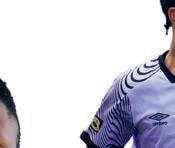


Oscar Bobb (Manchester City). After some time in the City’s youth structures, Norwegian Bobb nally got his chance last season when Pep Guardiola handed him 13 senior appearances. But it is this season where the attacking mid elder, 21, was expected to claim his mettle and evolve into a senior player. He fractured a leg but should return to the rst team soon.
Kobbie Mainoo (Man United). Mainoo is seen as important in rebuilding Man United. A lot of responsibility was placed on the shoulders of the 19 year old last season, having to carry United’s faltering mid eld, which has ailing veterans Casemiro and Eriksen. Mainoo has taken on the added responsibility as the main man.
Conor Bradley (Liverpool). Bradley, 21, is seen as heir to Trent Alexander-Arnold’s throne in Liverpool’s rightback position. The Northern Irishman made his senior debut under departed Jürgen Klopp last season and has not looked back, forcing new coach Arne Slot to make him a permanent feature of the match-day squad.

Wilson Odobert (Tottenham). The Frenchman was one of Tottenham’s shining lights last season after joining from Ligue 1 side Troyes. Odobert’s start to this season was blighted by injury but he’s been eased back into training with coach Ange Postecoglu admitting they’ve missed the contribution of the man who turns 20 on 28 November.








































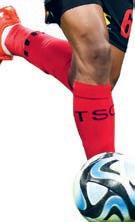









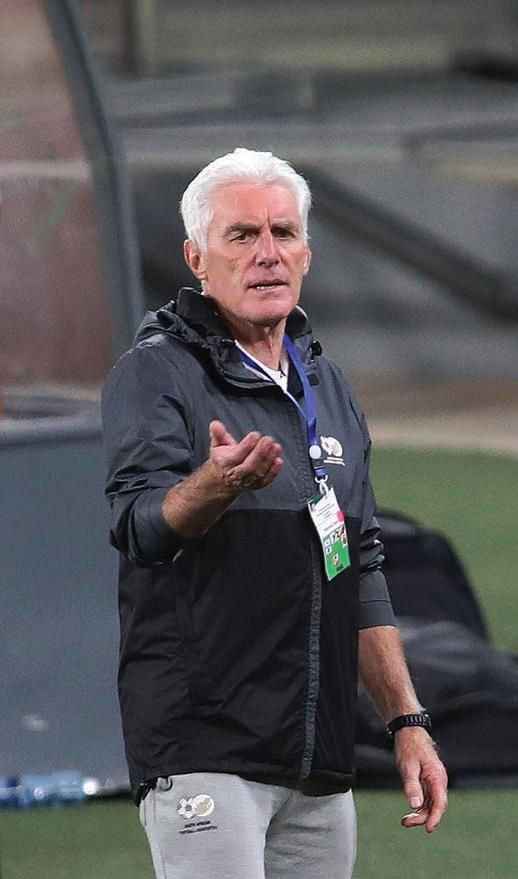

Manqoba Mngqithi
Sowetan sports editor NKARENG MATSHE shares that the verbal blows recently traded by Mamelodi Sundowns coach Manqoba Mngqithi and Bafana Bafana’s Hugo Broos highlight the need for South African football to pull in one direction
When he arrived in South Africa three years ago, Hugo Broos called for a meeting with PSL coaches to understand how they could work together in helping revive Bafana, then at their lowest ebb.
For some reason, the meeting has not taken place to this day, but Bafana have become a much-improved team. They have quali ed for two Africa Cup of Nations nals, are unbeaten at home under Broos and returned with a rst medal in over 20 years at the continental nals held in Ivory Coast early this year.
But relations between Broos and PSL coaches remain strained, as evidenced
when Manqoba Mngqithi had a full go at the Belgian, telling him to “mind your own house” after the Bafana coach had expressed shock at the fact that Teboho Mokoena and Khuliso Mudau – two of Downs’ key national players – had somehow been frozen out at club level.
Mngqithi emphasised team selection at Sundowns as his sole prerogative and would not take a cue from Broos but, thankfully a few days later, the duo had reportedly met to discuss the matter.
The truth is matters didn’t have to degenerate to such acrimony for colleagues to share ideas and concerns. As Mngqithi himself conceded, a telephone call would have suf ced for Broos to understand why, suddenly, Mokoena and Mudau had been
dropped from the Sundowns’ line-up when they are such important players at national level.
It’s a great pity that both coaches had to wait for of cial press events to speak ill of one another. This is unnecessary at a time when South African football is beaming with positivity, with Bafana attracting full stadiums for a change.
Bafana’s revival has admittedly been at the back of Sundowns’ dominance with as many as eight Downs players starting the Afcon quali er against Congo on 15 October. Naturally, the Sundowns technical team should have been one of the rst Broos initiated a meeting with, not least with captain Ronwen Williams also being a Downs player. Broos is known to shoot from the hip and often gets applauded on social media for this gung-ho approach. But on the Mokoena-Mudau matter, he was offside. It was not his place to express “surprise” at their benching without hearing from Mngqithi. The national coach behaved like an overeager social media troll whereas he could have used his standing to establish the real facts.
THE MEETING WITH PSL COACHES THAT BROOS FIRST PROPOSED THREE YEARS AGO IS CLEARLY NOT GOING TO TAKE PLACE, WITH CONFLICTING SCHEDULES CITED AS THE OFFICIAL REASON BUT INEXPLICABLE RELUCTANCE FROM SOME CLUBS AS THE MURMURED AND MORE PLAUSIBLE ONE.
The meeting with PSL coaches that Broos rst proposed three years ago is clearly not going to take place, with con icting schedules cited as the of cial reason but inexplicable reluctance from some clubs as the murmured and more plausible one. But that hasn’t stopped Bafana from performing. They thumped Congo 5–0 in Gqeberha to register their biggest win in an of cial quali er and should head to the Afcon nals in Morocco next year as one of the teams to watch.
The last thing Bafana need is an enemy within: a self-defeating power struggle triggered by something that could, as Mngqithi aptly put it, be resolved by a mere phone call.

